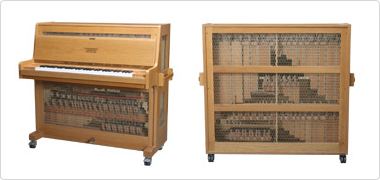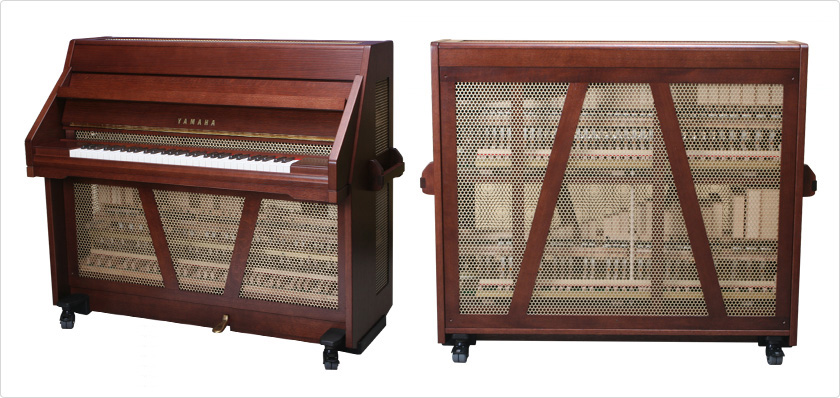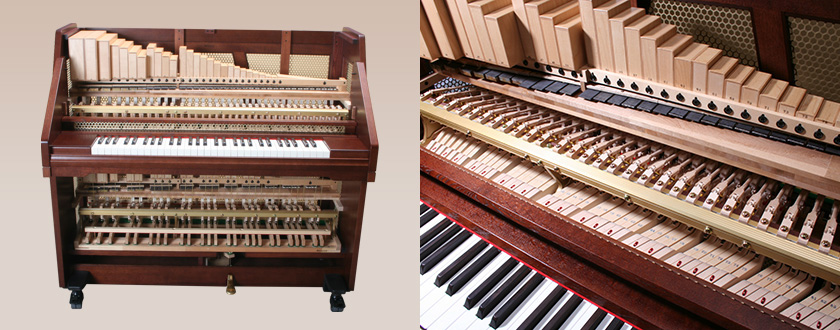The Structure of the Celesta
Celestas comes in a variety of structures
Some celestas even have the same structure as a pipe-organ
Celestas from Schiedmayer (a well-known German manufacturer) are louder than those from Mustel Company, and feature a larger bass range. These instruments are unique in that they use trackers and rollers (normally seen in pipe-organs) as their means to transmit movement from the keyboard to the sound bars.
The resonator boxes are graduated on four levels. The bass range resonator boxes are on the top level, while the midrange resonator boxes are on the lower right, and the treble resonator boxes are in the center and lower left (looking from the rear).

Schiedmayer model (c. 1988)
In Yamaha celestas, the hammers strike the sound bar from below
Celestas are generally designed so that the hammers strike the bars from above-similar to marimba or metallophone. This is the case for celestas from Mustel Company and Schiedmayer-hammers strike the sound bars from above, and beneath them are the resonator boxes.
However, in 1992 Yamaha released a celesta where the hammers strike the bars from below.

Yamaha model (1992)
This celesta was designed so that the hammers strike the bars from below, so that the grand piano action mechanisms could be used. Previous models would not make any noise unless the keys were pressed strongly, and it was impossible to vary the intensity of one's playing. Even if a player wanted to put some feeling into his or her playing, it was simply impossible to do so.
Yamaha therefore took the action mechanism of a grand piano and developed a system that would allow players to fully express themselves. In this structure, sound bars are struck from below-just like how the hammers strike the strings of a grand piano. Yamaha also placed the resonator boxes above the sound bars, for a structure that is quite different from that of previous celestas.
This structure allows Yamaha celestas to reproduce a wide dynamic range that perfectly suits the player's mood, from pianissimo (pp) to fortissimo (ff). It also improves the feel of the keyboard, making it easier to play faster music. Playing glissando (i.e. "sliding" the fingers over the keyboard to change the musical scale) on previous celestas was impossible as doing so would hurt the fingers of the player, but this new structure makes it easy.

Resonator box, sound bars, action mechanism, and keyboard (looking from the top)
This model was designed to use the original action mechanism as much as possible, but the width of the sound bars and the shape of the hammer shanks are slightly different from previous celestas.
Although the width of the sound bars varies by pitch, it is generally from 20 to 30 mm. This is much wider than the three strings used in the action mechanism of a grand piano, and the mechanisms cannot be lined up in a single row; instead, they are split into two rows, with white keys on top and black keys on bottom.
In terms of how the sound bars are struck by the hammers, the lengthwise action mechanism is exactly the same as that of a grand piano, while the crosswise action mechanism features a unique celesta design that matches the width of the sound bars. This is why there are gaps between the hammers.
